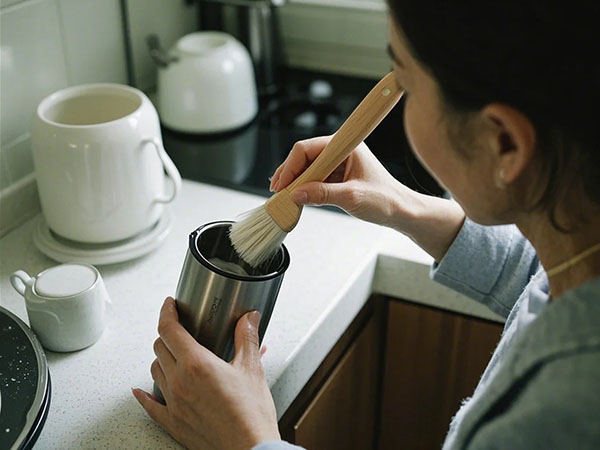With the accelerating pace of modern life, lightweight insulated containers have become indispensable in our daily lives due to their portability, practicality, and excellent heat retention. Whether it's coffee for the morning commute or hot tea during outdoor trips, lightweight insulated containers provide long-lasting temperature maintenance. However, after prolonged use, stains and odors inevitably accumulate inside these containers, which not only affects the user experience but may also pose potential health risks. Therefore, proper daily cleaning of lightweight insulated containers is particularly important.
Cleaning lightweight insulated containers should start with understanding their materials. Insulated containers on the market come in various materials, including stainless steel, glass, and ceramic, each requiring different cleaning methods. For stainless steel insulated containers, thanks to their smooth surfaces that resist staining, mild detergents and soft sponges are generally sufficient. However, it's important to avoid cleaners containing chlorine or bleach, as these can corrode the surface.
For insulated containers with glass or ceramic liners, cleaning requires more caution. These materials are relatively fragile and prone to scratching, so it's recommended to use soft cloths or sponges with mild detergents. During cleaning, avoid hard brushes or abrasive cleaners to prevent damaging the inner surface and compromising thermal performance.

Beyond the liner, components like lids and sealing rings also require regular cleaning. These parts are often breeding grounds for stains and odors and can harbor bacteria if not cleaned promptly. When cleaning, these parts can be disassembled, soaked in detergent and warm water, gently scrubbed with a soft sponge or toothbrush, and then rinsed thoroughly with clean water.
When cleaning insulated containers, some details require attention. For instance, before cleaning, check the container for any cracks or damage to prevent water ingress during cleaning that could cause further harm. Additionally, use lukewarm water for cleaning—avoid water that's too hot or too cold—to preserve the container's thermal properties. After cleaning, dry both the interior and exterior with a clean cloth to prevent water spots that could lead to stains and odors.
Furthermore, to extend the lifespan of insulated containers and maintain their cleanliness, it's advisable to adopt good usage habits in daily life. For example, avoid storing acidic or alkaline substances in insulated containers for extended periods to prevent liner corrosion; clean promptly after use to prevent stain and odor buildup; and store in dry, well-ventilated areas to avoid mold growth in humid environments.
In summary, daily cleaning is key to maintaining lightweight insulated containers in good condition and extending their service life. With proper cleaning methods and good usage habits, we can keep our insulated containers looking and performing like new, bringing more convenience and comfort to our lives.